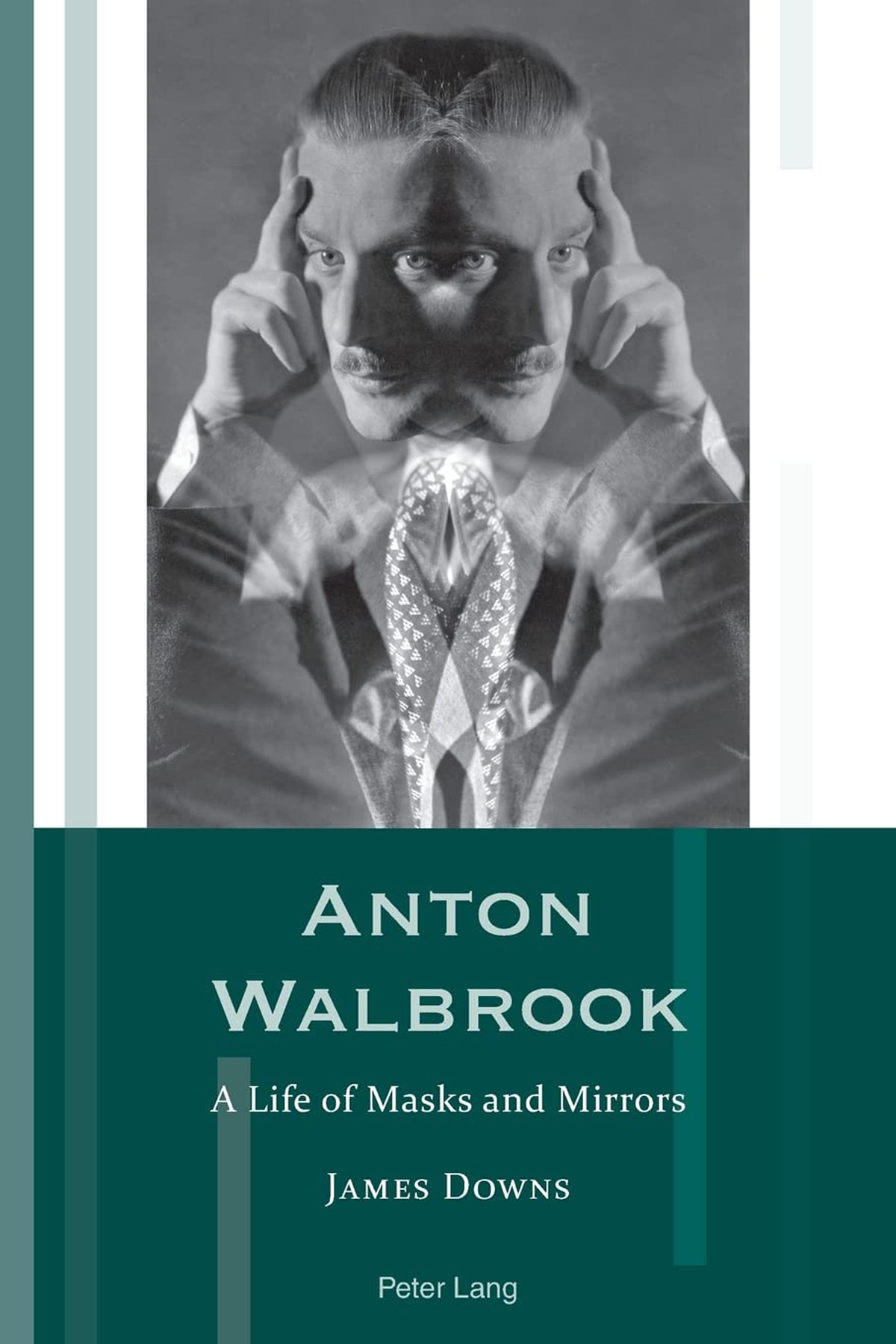Facts are facts, and for his biography of the Austrian-born stage, screen and eventually television actor Anton Walbrook, James Downs has amassed, cross-referenced and marshalled a remarkable number of them into a detailed chronicle of his career. Walbrook has often seemed a star who is both known and unknown – familiar through his more celebrated roles, remembered for his romantic-gothic star persona, but also enigmatic. He is probably still best known via the high peaks of his work with Michael Powell and Emeric Pressburger (The Life and Death of Colonel Blimp [1943] and The Red Shoes [1948]) and from his role in Max Ophűls’ La Ronde (1950). He certainly had charisma, so when the young girl who would become my mother swooned at him in his popular success Dangerous Moonlight (Brian Desmond Hurst, 1941) it was a swoon that rippled gladly through the rest of her long life. Committed fans might know Viktor und Viktoria (Reinhold Schűnzel, 1933) and The Rat (Jack Raymond, 1937) though they might know other versions of these films better. Beyond this, our sense of him is less secure. He was an actor who established his name on the stage and never abandoned theatre work when his film career blossomed yet much of his film career in mainland Europe has been little known in the Anglophone world, and half a century since his death, only the remnants of the substantial theatre work can now be glimpsed, through second-hand accounts and theatrical ephemera. Downs covers all of Walbrook’s work, giving due weight to the periods that bookend his career – the young actor’s rising career in Germany and his work on German television after his last cinema appearance.
The amount of research underpinning this book is exhaustive. It can at times feel exhausting too because its purpose is to document – and the record it sets out is copious. Production dates, cast lists, tours of theatre productions, filming schedules: all the administrative detail of building a stage, film and (latterly) television career are accounted for, project by project, and even though Downs’ style is lively and clear, the book is driven by archival evidence, and it lists what happened in a strict chronology. Some biographies might extrapolate from the facts to forge strong and palpable narrative arcs, even forging a sense of ‘destiny’ out of random life events. As a strategy it can be rewarding and persuasive, and there is scope to do so with Walbrook. Sometimes on stage, he was cast with actors he would later star alongside on screen. Early roles seem to anticipate more famous later ones. Critical moments in his real life often seem to be mirrored in his performances. Downs largely eschews this sort of secondary narrativisation and instead gives an objective, historically-disciplined chronology that always puts the evidence first.
There’s delight and fascination to be had in small facts, of course. What joy to be told that Richard Addinsell earned a packet from his best-selling recording of his ‘Warsaw Concerto’ (from Dangerous Moonlight) because RKO failed to spot how good it was and didn’t secure the rights to it. Raise your eyebrows at what was served to whom for the lunch at Claridges preceding the premiere of 49th Parallel and (if you are at all like me) light up a little when you read that Arthur Lowe and Shani Wallis were in Call Me Madam alongside Walbrook in London’s West End.
Grander narratives are at work here too. Exile is the principal organising theme (this is the 19th volume in Peter Lang’s ‘Exile Studies’ series) and there are solid records from the past that show how geopolitical upheaval impacted on Walbrook’s life. Downs works well with this material. Walbrook’s homosexuality is covered too, though Downs is more guarded when tackling more personal details like this. He is also wary about straying into subjective opinion, of Walbrook’s acting style, for example, whose physicality could hark back to his time on the Expressionist stage. There is still space for more analytical or revisionist work to be done in these areas, couched in the vocabularies of exile, queer and star studies. Downs does begin to head this way when the topic requires it, but he proceeds with caution.
What we get is nevertheless a complex, nuanced and ambiguous tale of exile and belonging. Adolf Wohlbrück (yet to become Anton Walbrook) gave his religion as Catholic to the German authorities in 1933. His father was Lutherian, his schooling was Catholic; so was his mother, but her ancestry was Jewish and although the authorities were suspicious, Wohlbrück managed to conceal both his non-Aryan roots and his homosexuality from them. Foreshadowing the character of Theo in The Life and Death of Colonel Blimp, the critical issue here is why it took so long for Walbrook to leave Germany. By 1936 he was probably the most admired and popular actor in the country. Downs gives generous space to examining Walbrook’s position, noting that ‘the long-running game of pretence he had played in Germany’ (125) worked against him when he reached the USA, where rumours and suspicions about his politics lingered through to 1938. Building up a picture from archival fragments, Downs’ adroit articulation of Walbrook’s geographical dislocation picks away at simplistic notions of exile and home. If Walbrook identified with the exile-artist Weimar community he found in North London through the war, Downs persuasively argues that the post-war period ushers in some remarkably unresolved markers of identity for him. While ‘continental’ British films like The Red Shoes and The Queen of Spades (Thorold Dickinson, 1949) showed British film culture’s innovative complexity and its sense of ‘Europe’, Walbrook is less settled once he becomes a naturalised British citizen, and from around 1950 ‘his life was characterised by a sense of restlessness and perpetual motion, as if seeking somewhere he could call home.’ (257)
Like exile, homosexuality has often felt like a displacement. Unsurprisingly, it figures in Walbrook’s acute wish for privacy, though occasional flashes of a more flamboyant Walbrook are recorded. We learn about Walbrook’s relationship with the Norwegian Ferdinand Finne through the 1940s, including some name-droppingly impressive dinner parties in their Hampstead home. But talk of homosexuality in the past often requires imaginative leaps and faith in the plausible, because the closeted nature of same-sex relationships means that the historical record is routinely vague, covert, occluded or missing. Fascinatingly, Downs pieces together the subsequent and life-long relationship between Walbrook and Eugene Edwards, a working-class London florist, 30 years Walbrook’s junior. Edwards outlived Walbrook by just three years and was interred with him in Hampstead cemetery in 1970. In tracing this story, Downs has to admit that it seems likely that Edwards is the person referred to as ‘Jimmy’ or ‘Jimmi’ in Walbrook’s letters, but we cannot be sure who Jimmy was, so a penumbra of doubt remains. Although he lies there with Walbrook in a shared grave, Edwards isn’t mentioned on the gravestone and even today, a website detailing the history of Hampstead cemetery insists that Walbrook’s grave ‘includes the ashes of his devoted secretary for 23 years.’ (https://tombwithaview.org.uk/: the emphasis is mine and so is the weary shudder of disdain as the truth of another gay man’s life and name is spirited out of history.)
The Walbrook-Edwards grave is in the cemetery corner. Joan and Jackie Collins’ mother is resting to their right; Labour Party leader and Walbrook’s former neighbour Hugh Gaitskell is at his feet. What would Anton think? He’s also close to the tomb of George Du Maurier, whose novel, Trilby, and its most famous character, Svengali, provide templates for Boris Lermontov in The Red Shoes. There are usually a few cards left at the grave for AW, or some modest flowers. I hope the people who leave them are grateful to Downs for his industry, for he has written a book which brings a lot into the light.
Competing Interests
The author has no competing interests to declare.

